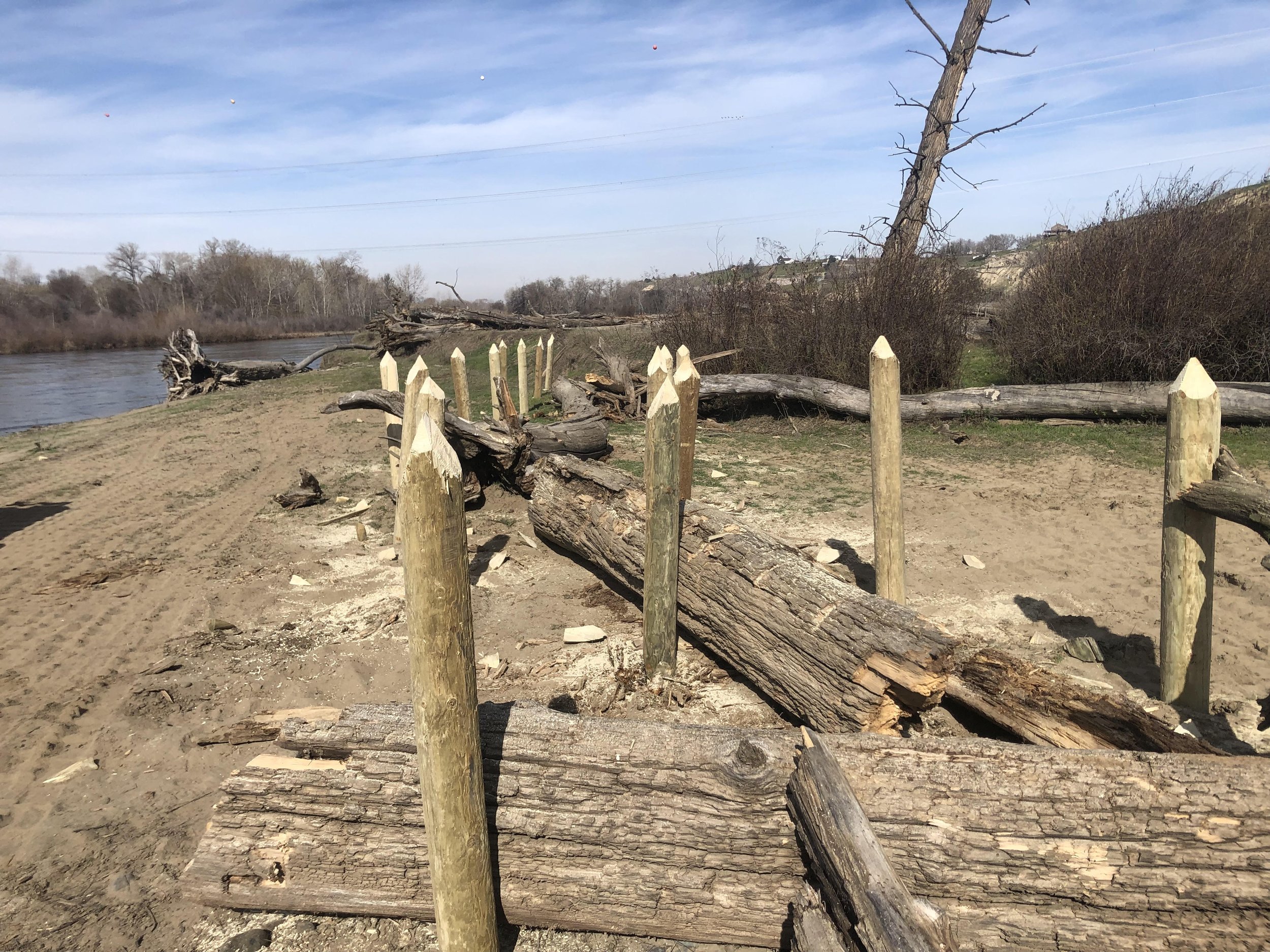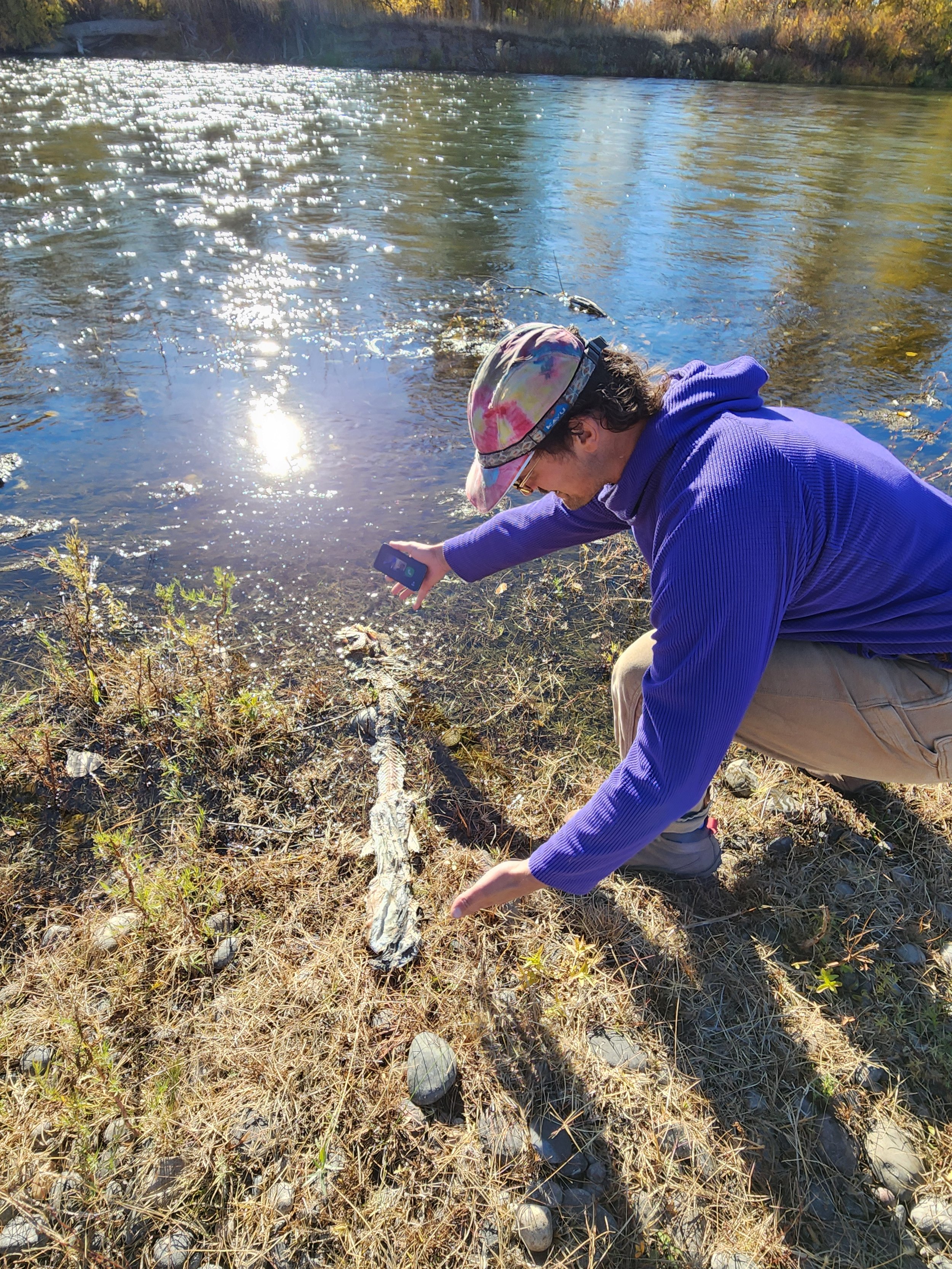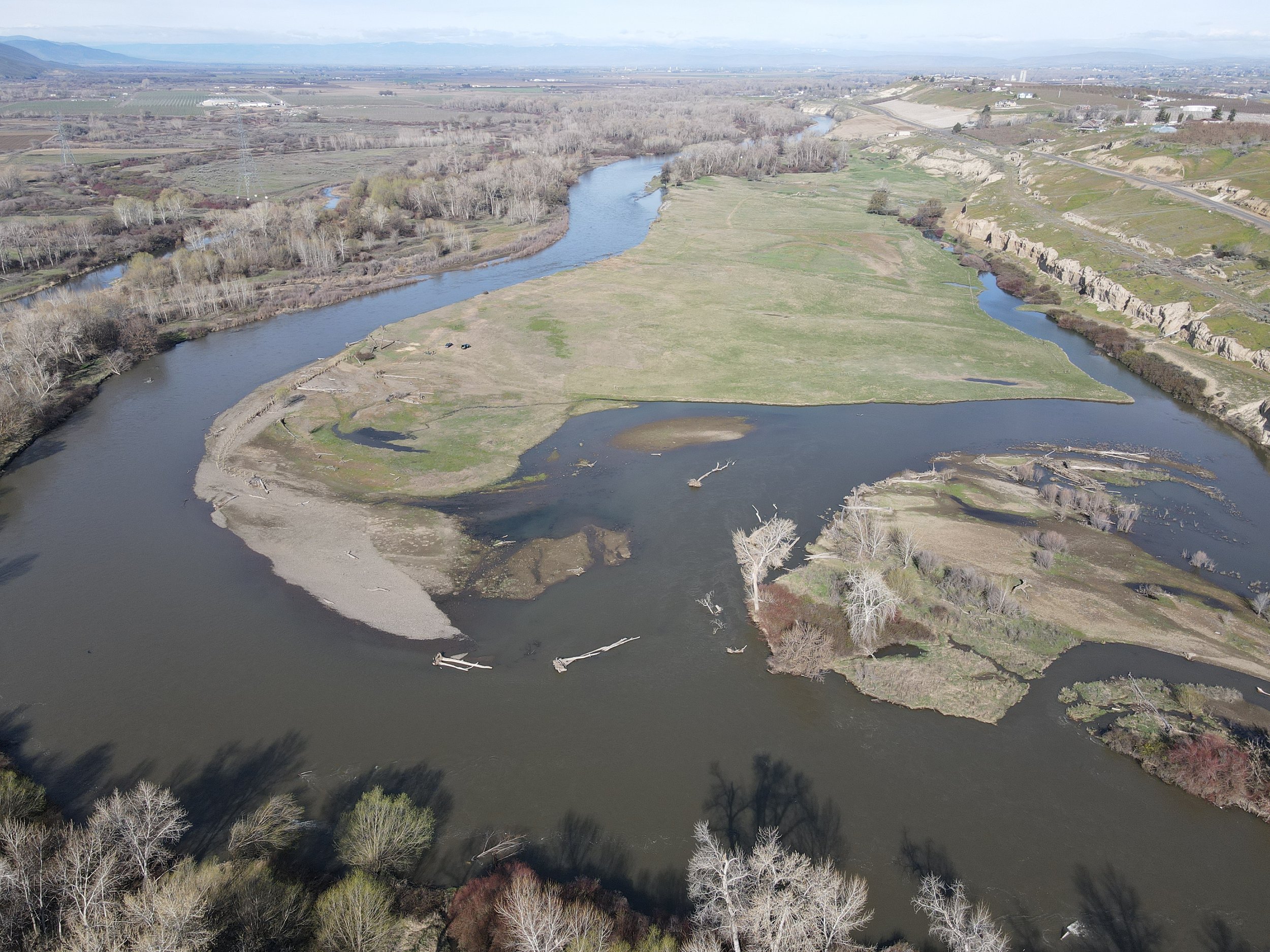
RM 80 Reforestation Project
Unique River and Agricultural Partnership
A large-scale riparian restoration project on grazed lands in the lower Yakima River just outside Granger, WA. The project includes cattle exclusion fencing along both the mainstem Yakima and a natural cold-water spring (a rarity in the lower river). The heavily-grazed lands will see a drastic change in riparian function, floodplain health, and stream shading. This work could not be done without the enthusiastic and willing support of the private landowners.
Mid-Columbia Fisheries has partnered with South Yakima Conservation District to provide a major uplift in a portion of the Yakima River that has received very little attention. This portion of the Yakima River is the corridor for all adult and smolt migration, and when the opportunity became available to perform work Mid-Columbia Fisheries was ready. Funded through the Washington State Conservation Commission, Washington Department of Ecology, Yakama Nation, and Unites State Fish and Wildlife Service; this project hopes to restore riparian trees along 1 mile of shoreline. 500 plants were planted in 2023, and the cattle exclusion fence has been built. See below the full site-plan that was implemented in 2024.
Major Change in the Lower River
Removal and modifications to the lower Yakima River have left bare stream banks and poor migration corridor habitat. The former cottonwood gallery that was present on the property in the 1950 has since been lost, in a large scale effort MCF plans to restore a portion of this meander bend back to a forest. A pairing of agriculture and restoration, this project showcases the possibility of uplift in a heavily commercialized lower Yakima River. The photo to the right shows the 1955 aerial of the project, and our outlined project boundary is in red.
Actions Taken
The project has been a long road to get implemented with over a decade of landowner communications. Finally in 2022, MCF secured funds to begin the reforestation after a set acreage was agreed upon to ensure cattle grazing. The partnership and collaboration to get to this point was critical for project progression.
Starting in 2023, a breadth of actions were taken to ensure successful implementation. Herbicides were applied to the project areas and surrounding field to combat invasive species. These treatments will continue until project completion scheduled in 2028.
In the Fall of 2023, the cattle exclusion fence was constructed around the 10.8 acre planting footprint. Following fence completion, 500 plants were planted in the southern most portion of the project to gauge survival and jumpstart regeneration.
The large scale planting effort (over 5000 plants) was implemented in the fall of 2024, including conventional planting, deep planting with stinger, and auger planting. To ensure survival of spring side plants, a temporary beaver exclusion fence was built. All plants were surrounded with wood chip mulch and watered in.
The stewardship of the site will continue through project completion. This will include invasive species management, brush cutting, any watering needs, and fence maintenance. Projects like this are an excellent example of diverse partnerships and interests coming together to achieve long term sustainability of both fisheries and agricultural practices.
Take a look at the photos below to see progression of the site!














